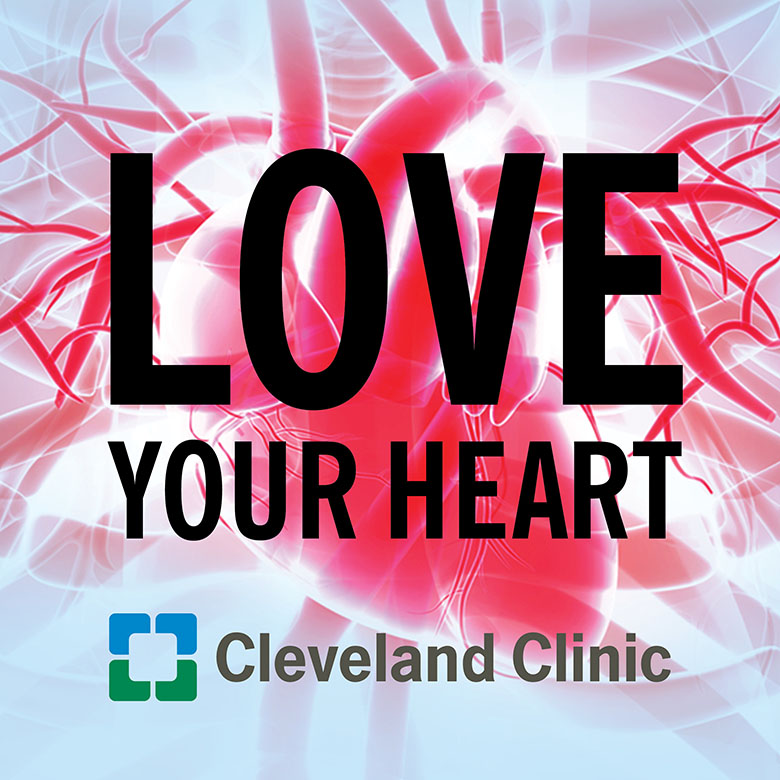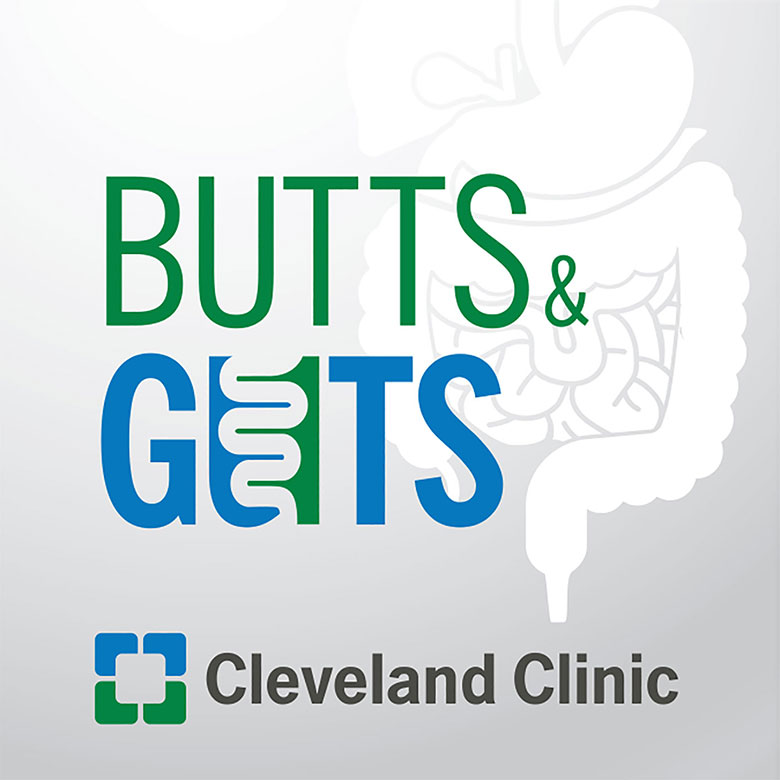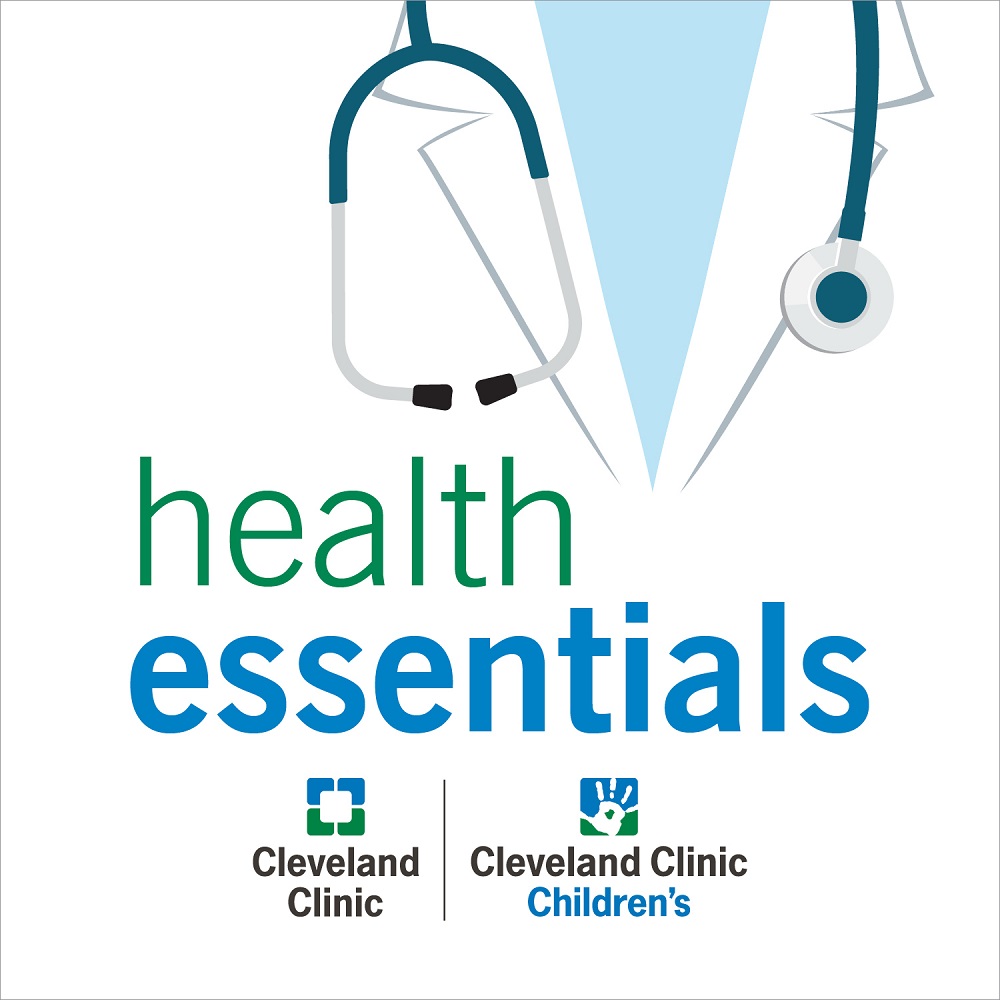What is Peripheral Artery Disease?

Peripheral Arterial Disease (PAD) is the narrowing or blockage of the vessels that carry blood from the heart to the legs. Natalie Salvatore, RN, talks with Dr. Teresa Wu from the Section of Vascular Medicine at Cleveland Clinic about PAD and what you need to know.
Subscribe: Apple Podcasts | Podcast Addict | Buzzsprout | Spotify
What is Peripheral Artery Disease?
Podcast Transcript
Announcer:
Welcome to Love Your Heart, brought to you by Cleveland Clinic's Sydell and Arnold Miller Family Heart, Vascular and Thoracic Institute. These podcasts will help you learn more about your heart, thoracic and vascular systems, ways to stay healthy, and information about diseases and treatment options. Enjoy.
Natalie Salvatore, RN:
Hello, my name is Natalie Salvatore, I'm a registered nurse at the Cleveland Clinic in the Heart, Vascular and Thoracic Institute.
Teresa Wu, MD:
Hi, my name is Teresa Wu. I'm one of the doctors in the vascular medicine section of the Department of Cardiovascular Medicine here at the Cleveland Clinic.
Natalie Salvatore, RN:
Thank you so much for joining me. I am so excited to talk to you today about peripheral artery disease. So, I think to first kick off, can you tell me a little bit about what peripheral artery disease is?
Teresa Wu, MD:
Absolutely. So peripheral artery disease, or as we call PAD, is a condition that results from cholesterol plaque buildup inside the arteries. The arteries are the blood vessels that are responsible for delivering blood flow to parts of our body, including our organs, and our arms, and our legs. And when cholesterol plaque builds up in the arteries to the leg, that results in this condition called PAD, or peripheral artery disease. So, what happens when cholesterol plaque builds up in the arteries is that it can lead to narrowing inside the artery, and can affect blood flow delivery to the leg, and that's what can lead to symptoms of peripheral artery disease.
Natalie Salvatore, RN:
What are some of the symptoms of PAD?
Teresa Wu, MD:
That's a great question. So, it's actually important to highlight that a large majority of people with PAD actually don't have symptoms at all. And this is why it is so important to screen people for PAD who have risk factors for this. And that can include things like diabetes, high blood pressure, anyone who's smoked in the past. So, it's really important that people with those risk factors talk to their doctors about being screened for PAD because of how prevalent it is, and the fact that a lot of people don't actually have symptoms from this.
But if you were to have symptoms from this, most commonly what we will hear is symptoms of cramping, or aching, or tightness of the legs or the feet, usually with activities such as walking or taking stairs. And this aching or cramping will oftentimes improve or resolve with rest. That's probably the most common symptom of PAD. Other ways that PAD can present would be a non-healing wound or an ulcer on the leg or the feet. And also in more severe cases, changes in the color of the feet or the legs, numbness, tingling, or a cool skin on the feet.
Natalie Salvatore, RN:
And so, I assume those symptoms are occurring because there's not enough blood flow getting to the limb. Is that accurate?
Teresa Wu, MD:
That's correct, yes. So, if you do notice that you have any of these symptoms, it's really important to talk to your doctor about this and ask if you should be screened for PAD, especially if you have any of those risk factors that we talked about earlier. It's also important to highlight that some people with PAD can often have what we call atypical symptoms or less common symptoms. So nonspecific symptoms like leg fatigue or tiredness with activity can sometimes be a sign of PAD as well.
Natalie Salvatore, RN:
So, you mentioned the atherosclerosis or plaque buildup within the arteries. Is it all arteries, or where does this typically occur in the body?
Teresa Wu, MD:
So, atherosclerosis or cholesterol plaque disease can really form in any artery of the body. When it forms in the legs, that condition is called peripheral artery disease, or PAD. When it forms in the heart, that's called coronary artery disease, or CAD. And when it forms in the neck arteries, that's called carotid artery disease. So, atherosclerosis can really affect any artery in the body, and in terms of what we call it, it depends on the location where we see the cholesterol plaque or the atherosclerosis.
Natalie Salvatore, RN:
Now, you've highlighted a couple risk factors for developing this, are there any additional risk factors?
Teresa Wu, MD:
That's a great question. So, we do tend to see PAD in people who are older, so people over 65, as well as people under 65 with risk factors such as high blood pressure, diabetes, kidney disease, and also those who have atherosclerosis or cholesterol plaque disease in other parts of the body already, such as the heart. Aside from age, historically, PAD has been seen a little more often in men than women. And in terms of ethnicity, we do tend to see PAD higher in African Americans than non-Hispanic white Americans. But ultimately, I would say that identifying people with PAD should really come down to looking at the risk factors as a whole, specifically including other conditions such as high blood pressure and diabetes.
Natalie Salvatore, RN:
Well, if a patient is concerned that they might be at risk for PAD, what type of diagnostic tests are there, or what type of testing might a patient go through to determine and screen if they really do have PAD?
Teresa Wu, MD:
That's a great question. So, at the very least, I would talk to your provider about your concerns and about any symptoms that you may be noticing. And at the very least, a very thorough physical exam with your provider should be done. And that includes having them feel the pulses on your body and having blood pressures taken in both arms. But beyond that, there is a really good screening test that we do for PAD, and this is called the ankle brachial index, or the ABI. And essentially what this test entails is placing blood pressure cuffs on the arms and at the ankles on both sides and checking the blood pressure. And we take the ratio of the blood pressure from the ankle divided by the arm, and that generates a number. And that number is what we use to determine whether or not somebody has PAD. So, it's a non-invasive test, and it's very easily done by our vascular lab, and so if there is any concern that symptoms could be from PAD, then this would be a great test to start with.
Natalie Salvatore, RN:
And are there any other tests that you may perform based on that?
Teresa Wu, MD:
Yeah, so if the ABI result is consistent with a diagnosis of PAD, sometimes further testing such as an ultrasound looking inside the arteries of the leg may be done to help provide some more information. Although the ABI is a very accurate test, a follow-up ultrasound does not always have to be done. But if somebody has had surgery or procedures done of the arteries, then we will oftentimes use ultrasound in addition to an ABI and monitoring those patients.
Natalie Salvatore, RN:
So, ABI and ultrasound are both non-invasive. Is there any invasive testing for diagnosis of PAD?
Teresa Wu, MD:
For diagnostic purposes of PAD, there aren't really any invasive tests that we do. One test that we will sometimes do for certain people is something called an angiogram, where we place a catheter in the arteries, and we take pictures of the arteries. That's only done in cases where we are suspecting that that patient may need a procedure such as a stent or a balloon to open up the arteries, but that would not be done as an initial diagnostic test.
Natalie Salvatore, RN:
So that sounds a little bit more like a treatment. What other treatments are there available for PAD?
Teresa Wu, MD:
A lot of what we do in terms of treatment is really to prevent progression of PAD once it's found, and also to prevent heart attacks and strokes, which people with PAD are at higher risk for. So, when we manage PAD from a medication standpoint, often what that will include may be medications to help thin the blood, medications to lower the cholesterol and control blood pressure as well as diabetes.
Natalie Salvatore, RN:
So, it sounds like there's a mix of medications and lifestyle changes that a patient could make to help prevent PAD from getting worse.
Teresa Wu, MD:
Yes. So, the medications, it's really one part of the equation here. But beyond that, there are other therapies that have been developed for people with PAD such as a supervised exercise program, which can be very helpful for people who have symptoms from PAD such as the cramping and the aching that I was talking about earlier. And also, of course, sticking to a heart-healthy diet and a routine that includes regular physical activity is very good for people with PAD.
Natalie Salvatore, RN:
Now, if a patient doesn't make any lifestyle changes or chooses not to start on any of the medications, what are some complications that might happen if PAD goes untreated?
Teresa Wu, MD:
These would be some of the more dreaded outcomes of PAD that we ultimately would like to prevent and get way, way ahead of. But in cases of severe PAD in somebody who doesn't, say, have regular medical care, some of the more serious complications of PAD could include amputations, a non-healing wound that could lead to infection, and also heart attacks and strokes, which are more common in people who have PAD. As I mentioned earlier, if you have atherosclerosis or cholesterol plaque disease in one area of the body, you're more likely to develop it in other areas of the body. And the places that we get very concerned about are the heart and then the blood vessels supplying the brain, and that can lead to heart attacks and strokes. So that's a big reason why we are very aggressive with our medical therapies in people with PAD in the first place.
Natalie Salvatore, RN:
Now, once a patient gets diagnosed, and begins lifestyle management or medical management, what does the future look like? What is their outlook and how do they best care for themselves moving forward?
Teresa Wu, MD:
That's a great question. So, PAD is not something that I would think about as curable necessarily, but it is something that is very treatable. And we have so many great medical therapies now that allow people with PAD to live longer than they've ever been before, especially if they continue to receive regular medical care. And it's important to highlight that, in the majority of cases, people with PAD end up having stable or even improved symptoms over time, and only a very, very small number of people will ever progress to one of those complications that I was talking about earlier. So it's really important to, first, make sure that you talk to your provider about being screened for PAD if you have those risk factors or any concerning symptoms, and then, two, if PAD is found, that you continue to have regular medical care with your primary provider or a vascular provider to ensure that you're on the best medical therapy to prevent it from getting worse.
Natalie Salvatore, RN:
Now, for a patient who might have concerns that this might be something that they have, what questions should they come prepared to ask their doctor?
Teresa Wu, MD:
So, I would talk to the doctor about the risk factors that you have. What your doctor may ask you further would be about any symptoms of PAD, some of which we discussed today. So, things to really look out for would be any unusual leg discomfort, cramping, or fatigue, really worse with walking or activity, any non-healing wounds or ulcers. Those would be really the big things to look out for and mention on the visit. And I think at that point, a good back and forth discussion with your doctor can be helpful in determining whether or not you should be screened further with an ABI test.
Natalie Salvatore, RN:
Then, after diagnosis, what kinds of questions should patients think about in that initial follow-up as far as how to best care for themselves? What are some common questions maybe your patients have asked you?
Teresa Wu, MD:
A lot of my patients will ask about lifestyle modifications. A big risk factor for PAD also is smoking. Out of all the things that I've talked about with regards to high blood pressure, and diabetes, and age, and things like that, smoking is really at the top of that list there. And so, a good portion of my patients with PAD are smokers, so that is something that we'll spend a lot of time working on together and helping them to quit. So, at the follow-up visits, a lot of the conversation revolves around lifestyle changes such as smoking cessation, and also ways to help integrate healthy dietary habits and physical activity into their life and into their routine.
Natalie Salvatore, RN:
So, what would be the one piece of advice that you would have for patients, whether it's pre-diagnosis, maybe looking at symptoms, or after diagnosis, looking at life moving forward, what would be your biggest piece of advice to our listeners?
Teresa Wu, MD:
I would really encourage all patients to be, first, aware of this condition, and also, I would really encourage people to bring this up to their doctors to see if this is something that they should be screened for, especially if they have any of those risk factors that we talked about. Because PAD is so common in the population and unfortunately it oftentimes goes overlooked or underdiagnosed. And so, I think the key to treating PAD really lies with prevention and catching it early and getting on the right track.
Thank you so much for having me on this podcast. I'm really happy to be able to provide some information for our community here. And if there's any concern or questions that any of our listeners have, I would encourage you to talk to your primary care doctors and also, you're always more than welcome to come to make an appointment to see me.
Announcer:
Thank you for listening. We hope you enjoyed the podcast. We welcome your comments and feedback. Please contact us at heart@ccf.org. Like what you heard? Subscribe wherever you get your podcasts or listen at clevelandclinic.org/loveyourheartpodcast.

Love Your Heart
A Cleveland Clinic podcast to help you learn more about heart and vascular disease and conditions affecting your chest. We explore prevention, diagnostic tests, medical and surgical treatments, new innovations and more.


